Our top basil growing tips are sure to help you succeed at growing great basil at home. And store-bought basil is expensive, so why not grow your own basil? It’s easy to do and we show you how with these growing basil tips.
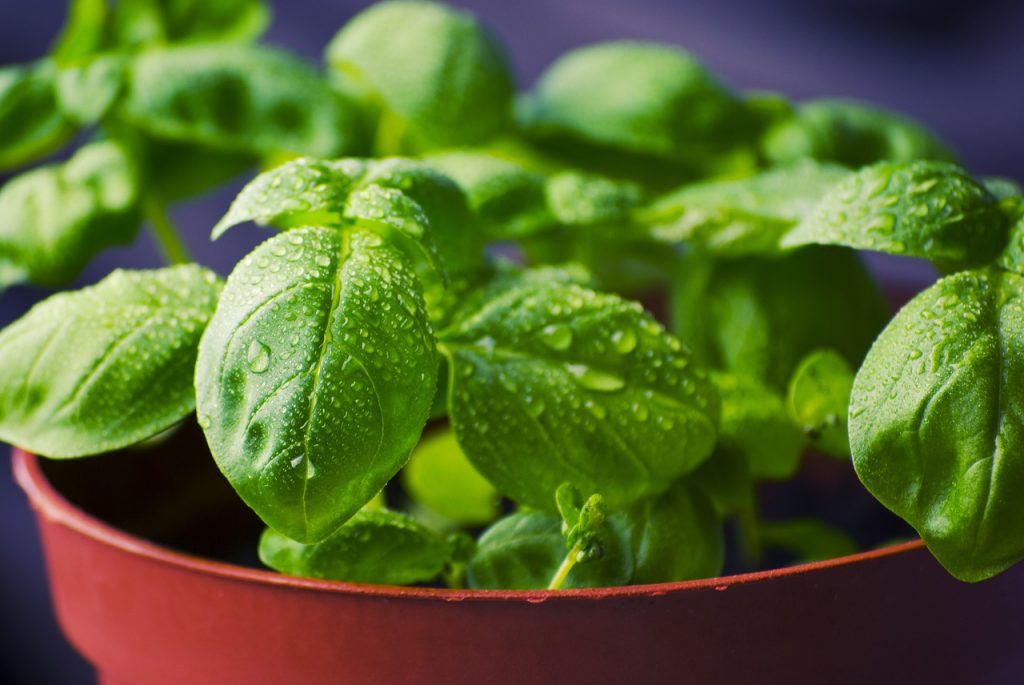
Related: 7 Basil Pests (And How to Get Rid of Them!)
The most common type of basil used in cooking is known as Sweet Basil or Common Basil and the botanical name is Ocimum Basilicum. There are also many other types of basil such as Thai Basil, African Blue Basil, Greek Basil, and Holy Basil to name just a few. The flavor of each is varied as are their growing conditions.
The following tips focus on basil growing conditions for Sweet Basil – the most widely used and grown. Sweet Basil is the basil essential for Italian cuisine and the basil most commonly sold in grocery stores.
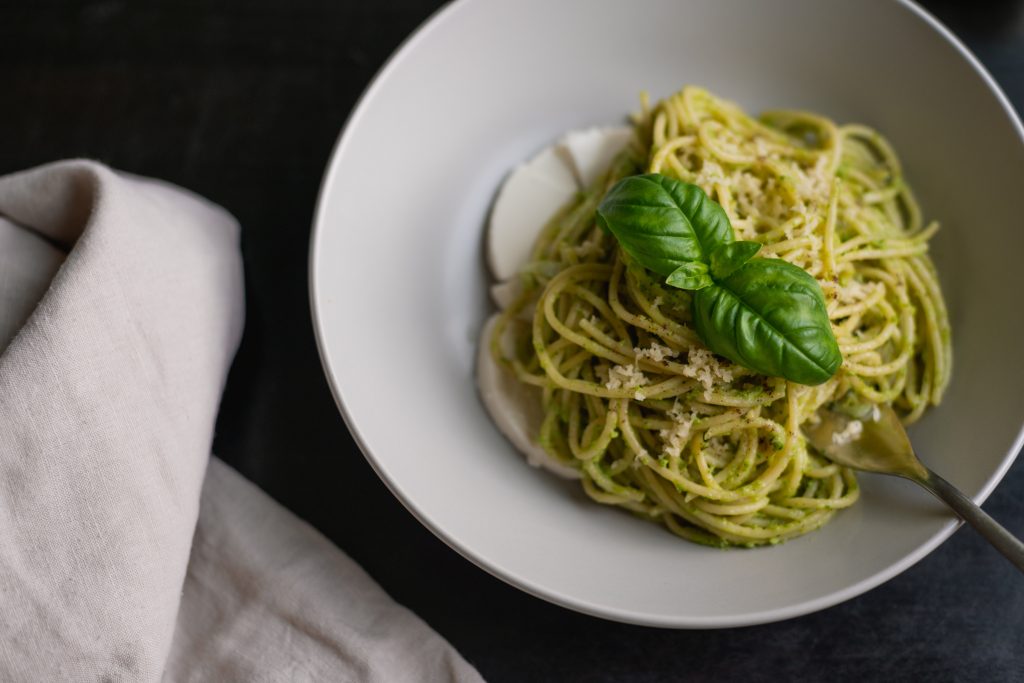
Let’s get into the 7 tips to help ensure you have the best possible chance of growing basil successfully in your garden.
- Tip 1: Basil Thrives in Warm Soil
- Tip 2. Basil Loves Sunshine
- Tip 3. Basil Hates Wet Feet But Loves A Drink Of Water
- Tip 4. Harvest Basil Regularly For A Bushier Plant
- Tip 5. Feed And Mulch Your Basil Plant
- Tip 6. Pinch Off Flower Buds To Prolong Basil Leaf Production
- Tip 7. Grow More Basil Plants From Cuttings
There’s a bonus tip at the end of the article, be sure to read through to the end to catch it. Now let’s go through each tip in detail.
Table of Contents
- Tip 1: Basil Thrives in Warm Soil
- Tip 2. Basil Loves Sunshine
- Tip 3. Basil Hates Wet Feet But Loves A Drink Of Water
- Tip 4. Harvest Basil Regularly For A Bushier Plant
- Tip 5. Feed And Mulch Your Basil Plant
- Tip 6. Pinch Off Flower Buds To Prolong Basil Leaf Production
- Tip 7. Grow More Basil Plants From Cuttings
- Bonus Tip: Can You Grow Basil From The Grocery Store?
- FAQ – Frequently Asked Questions
- Conclusion
- Recommended Products:
Tip 1: Basil Thrives in Warm Soil
Basil needs warm soil to grow. Ideally, the soil should be 65-95°F (18-35°C) and you can test your soil temperature with a soil thermometer. The outside air temperature should be above mid 70°F (20°C) for the ideal soil temperatures to be reached. So unless you are thinking of growing basil hydroponically or in a greenhouse, it is best to start growing basil from seed 2 weeks after the last frost.
If you live in a part of the world where there is no frost and the weather is always warm, you may be lucky enough to have basil growing year-round.
Conversely, if you have cold weather all year, you may have to give basil a miss and try a cold-tolerant food plant or alternative growing methods which may be indoors with grow lights or in a temperature-controlled greenhouse.
Basil is generally grown in the warm months of summer with planting starting in spring through to fall.
You will know your basil plant is affected by cold conditions when its leaves develop yellow or black discoloration on its leaves. It may droop and generally look unhealthy.
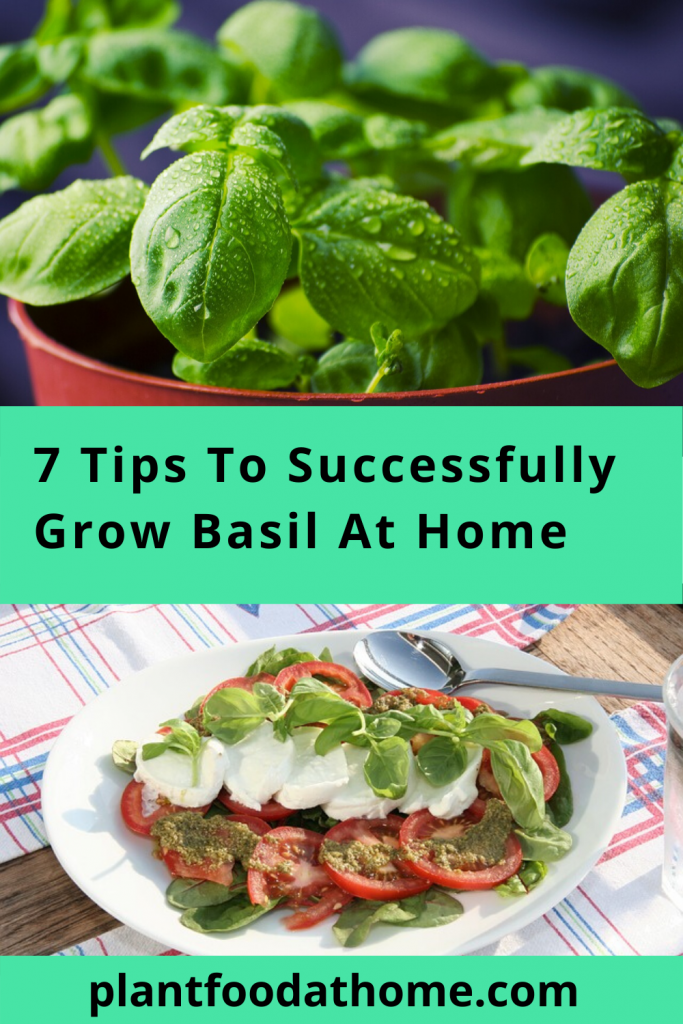
Tip 2. Basil Loves Sunshine
Basil will grow best with 6 to 8 hours of sunshine a day. Position basil in the garden or pot to catch the morning sun.
If afternoon sun is the only option, that’s ok, just make sure you keep up the watering so it doesn’t dry out with the harsher conditions of afternoon sunshine.
Tip 3. Basil Hates Wet Feet But Loves A Drink Of Water
Basil does not like wet roots, also called wet feet, and will rot if the roots are wet for a prolonged period of time.
If you are growing basil in a pot, make sure it doesn’t sit in water day after day.
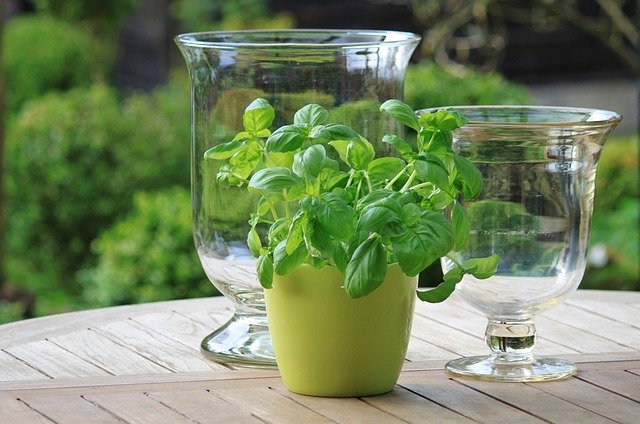
A sign of over-watering and potential root rot is yellow leaves or brown leaves that not only discolor but also drop off the plant. The basil plant could droop and look wilted. This may be confused with too little water.
During the warmer weather, basil will appreciate daily watering. Like many soft-leafed herbs, basil needs a good supply of water to keep it healthy and prevent it from becoming bitter-tasting and wilting.
So what is basil’s water requirements? How much water should you give a basil plant? The answer depends on your basil growing conditions. Such as, how free draining is your soil? Is the basil in a pot (more water will be needed) or a garden bed? How hot is the climate, and so on.
The best way to gauge how much water your basil plant requires is to gently scratch the surface area of the soil with your finger. If the soil feels moist to touch, that’s perfect, you don’t need to water at the moment. If it’s really dry then give your basil plant a drink and water more frequently.
With practice, you’ll find the perfect balance of watering for your climate and conditions. You could also use a water gauge to monitor the soil moisture.
Tip 4. Harvest Basil Regularly For A Bushier Plant
You can pinch out the top center set of basil leaves to encourage a bushier basil plant. The idea here is that by removing the centre stems and leaves you encourage the plant to produce more side stems and therefore more leaves.
Harvest basil leaves by pinching off the leaves with your thumb and pointer finger or you can cut the stems with your secateurs, garden clippers or scissors.
Always leave some leaves on the plant as it will not survive otherwise. If you are harvesting only leaves and not the stems you should still remove bare stems to allow further healthy growth by the remaining stems and leaves.
- Looking for ideas to cook with basil? See our Basil and Corn Fritters Recipe.
Tip 5. Feed And Mulch Your Basil Plant
Basil loves compost and well-rotted manure! By planting your basil into soil rich in compost and well-rotted manure, you will provide your plant with all the beneficial nutrients for the growing season.
Apply a natural organic fertilizer every few weeks. Basil will enjoy worm castings and fish or seaweed emulsion. A serve of pellet chicken manure would also be welcome.
Mulch 2-3cm thick around the basil plant to stop the plant roots and surrounding soil from drying out too quickly. The mulch will break down throughout the growing season, providing further food and nutrients to the plant and the soil.
Tip 6. Pinch Off Flower Buds To Prolong Basil Leaf Production
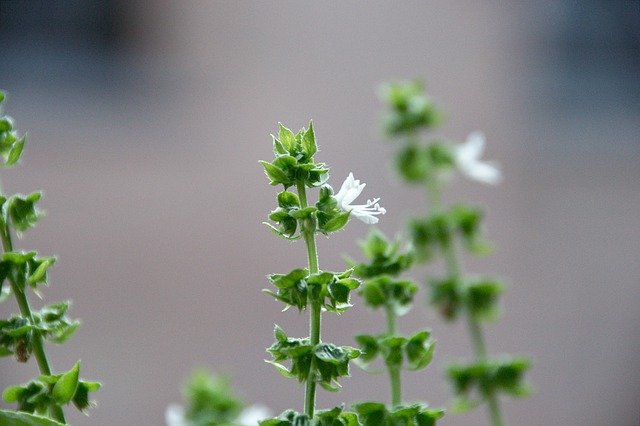
Basil will naturally want to flower at the end of its production. When conditions are not right for the basil plant, it may want to flower earlier than expected. Flowers will produce seeds and this is natures way of ensuring future crops.
Flowering is wonderful food for the bees. However, you can prolong the inevitable flowering by pinching off the flower buds before they bloom. Pinch off the stem at least two sets of leaves down from the bud.
The basil plant will then continue to produce leaves instead of flowers.
When flower buds form and bloom, the plant puts all its energy into the flowers instead of the leaves. And once flowering begins, leaves will become bitter tasting.
When the basil plant does flower, enjoy watching all the bees visit your garden to provide further pollination to other fruit, vegetables and flowers.
If you let the flowers dry on the plant you will have seeds to grow in future seasons and have more plants for free! Your garden is generous.
Tip 7. Grow More Basil Plants From Cuttings
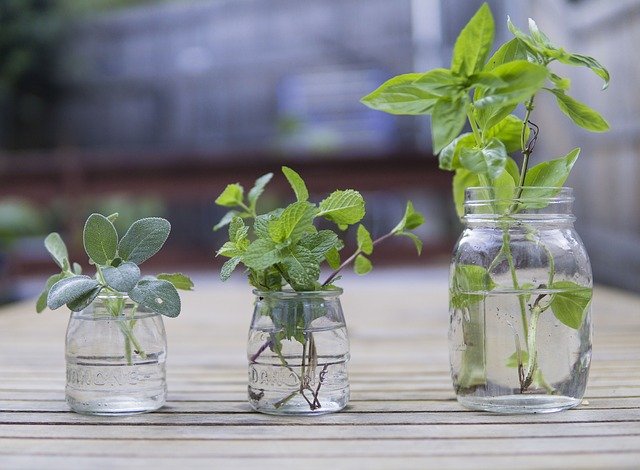
Have you ever wondered how to regrow basil? You can grow plenty of new plants from just one plant! Growing basil from cuttings is really simple. Here’s how.
Once your basil plant is a decent size, enough to harvest a few stems, you can start taking 10 cm cuttings to propagate more plants.
Take the cuttings below a leaf node (where the leaf originates from the stem) and remove the lower leaves, making sure to leave a few leaves at the top of each stem.
Place the cuttings in a small glass, jar or clear plastic bottle with a few inches of water and leave it on a window sill with plenty of indirect light.
Leaves should not be touching the water. Change the water every second or third day.
In approximately 2 weeks the cuttings will have formed roots. When the roots have an inch or so of growth you can plant the new basil plants into pots and then ‘harden them off’ (see more on this in the following ‘Bonus Tip’ below).
Or if the weather isn’t too hot yet, you can plant them directly into the garden. Pick a time towards the end of the day when the sun is not too strong and water in well.
In the following days, water the new plants morning and evening to ensure they establish themselves before returning to your normal watering routine.
Bonus Tip: Can You Grow Basil From The Grocery Store?
Yes, you can! Pots of sweet basil are sold in grocery stores for cut-and-come-again leaves to conveniently add to meals. Planting these out into the garden is a great way to start growing basil.
However, as the plants have usually been grown in artificial greenhouse conditions and placed on grocery store shelves for days at a time, they can be starved of sunlight. They may not do well outside, to begin with.
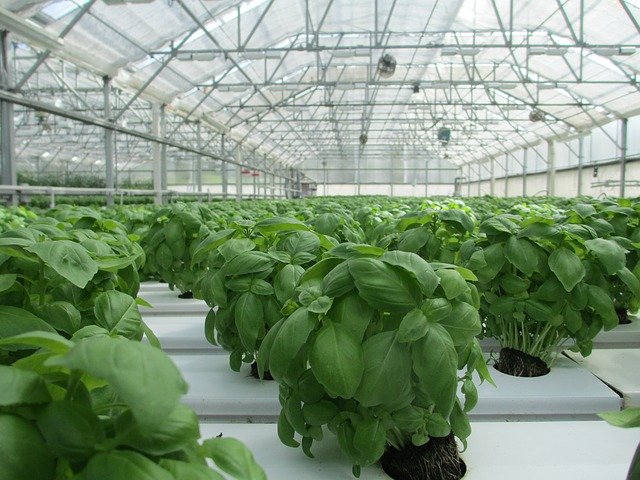
You can help the plant by ‘hardening off’. This is a process of gradually exposing the plant to sunlight each day.
To begin, place the plant outside in morning sunlight for 2-3 hours the first day. Morning sun is best as it won’t be as strong as midday and afternoon sun.
Shift the plant into indirect light for the remainder of the day and bring the plant inside for the night.
The following day, increase the direct sunlight hours by 1-2 hours and continue to do so of the next few days.
The process should take no more than 7-10 days.
Keep the plant well watered but ensure the pot is free draining so the plant does not sit in water.
Once your basil plant has been hardened off you can transplant it into a larger pot for your patio, balcony or plant it directly into the garden.
- Related Reading: Hardening Off Seedlings (& Avoiding Transplant Shock)
- 7 Reasons Basil Leaves Turn Yellow – With Solutions!
FAQ – Frequently Asked Questions
Q: How long do basil plants last?
When growing basil outdoors in the garden, in ideal growing conditions, basil plants can be productive for 6 months or longer.
If you are growing basil in pots, the basil plant will last around 4 months. Basil will happily grow in both pots and the garden.
Conclusion
Basil is a wonderful and versatile herb to add to any food garden. Dinners will be tastier and your wallet will be fuller when you grow basil at home. With the right growing conditions, you can have months of fresh basil in the garden. So why not try growing your own basil at home?
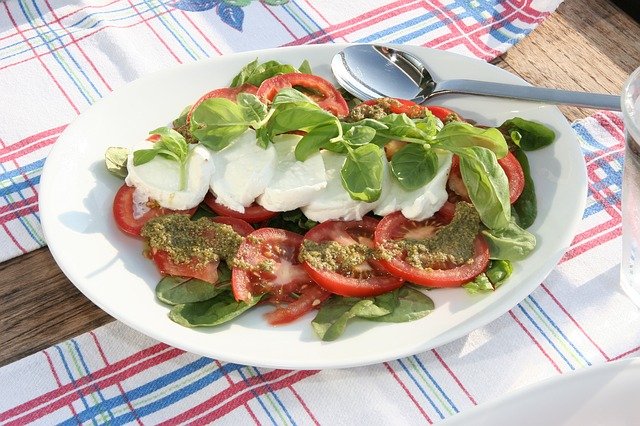
Recommended Products:
- Large Leaf Italian Basil Seeds
- Water Gauge
- Soil Thermometer
- Hydroponic Herb Kit – Grow basil all year long indoors with a hydroponic kit.
- Organic Worm Castings
- Organic Fish Fertilizer
- Seaweed Fertilizer
- Pellet Chicken Manure
- Grow Lights
For more herbs to grow you might like to see our other articles:
- How To Grow Cilantro: Tips For Growing Cilantro
- Grow Lemongrass: Planting and Growing Guide
- How To Grow Mint: Complete Guide To Growing Mint At Home
- Growing Parsley: Planting, Harvesting and Storing Parsley
- How To Grow An Abundance Of Dill For Your Edible Garden
- Drought Hardy Herbs To Plant At Home
- How To Grow Ginger: Guide To Growing Ginger At Home
- How to Grow Lemongrass: Planting and Growing Guide
- How to Grow Chives in Your Herb Garden
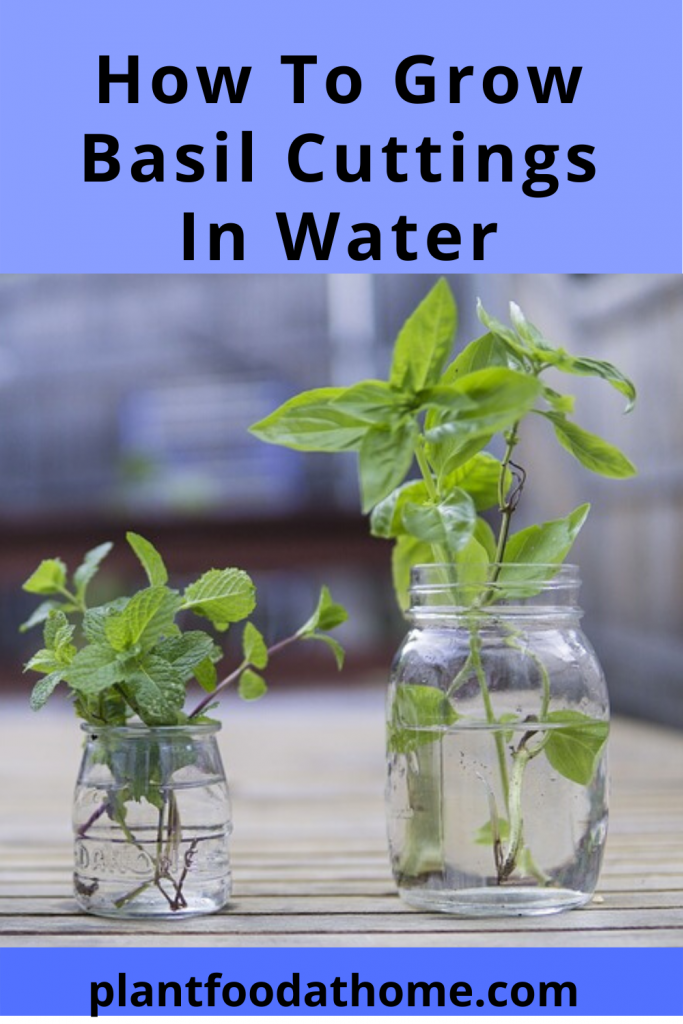

I have been trying to root my basil. I have cut long stems, removed the leaves and change the water every few days. I am wondering if my softened water is keeping it from rooting. Do you have any knowledge about this ? I am going to try with some bottled water.
Hi,
Thanks for your question. Yes, softened water might be keeping the basil from rooting. This article says watering a garden with softened water regularly is not recommended.
Please keep us posted on how you get on using the bottled water 🙂
I bought some sweet basil seeds to add to my garden. This has help me a lot about how to grow it thanks
You’re very welcome Amy, thanks for your lovely comment!
This is a fantastic article! We grow our own garden and had basil last year for the first time – we were a little clueless with it but our plants still grew very well!
That’s great Samantha! It’s surprisingly easy to grow food 🙂
O wow this was so interesting and informative! Anyone looking to grow basil should read this post. I love that you said basil hates wet feet but loves a drink of water!
Thanks, Janay 🙂 It’s a little ironic isn’t it; basil loves to drink water but doesn’t want it hanging around! Free draining soil is the key here.
Basil is a staple in our garden every year. I knew most of these tips but I do need to start feeding and mulching, thanks for the tips on those. This past season, we lost almost all our basil when we had several days of heavy rain. Wonder if the mulching would have helped with the ‘wet feet’? Anyways, appreciate the tips!
Hi Ellen, mulch is great for protecting soil from drying out and helping to condition the soil, though it probably won’t protect against root rot. Free-draining soil is the best solution, allowing the water to drain away. Of course, when it rains and rains this can be difficult in the best of soils! If you haven’t already tried it, building up the soil a couple of inches with good compost and manure to allow it to be more free-draining could work in future. Best of luck!
Ah perfect timing! I bought various herb seeds and hoping to grow my own including basil! I go through various herbs a lot! Saving this post to reference!
Fantastic Supal! Raising your own herb seeds is so much fun 🙂